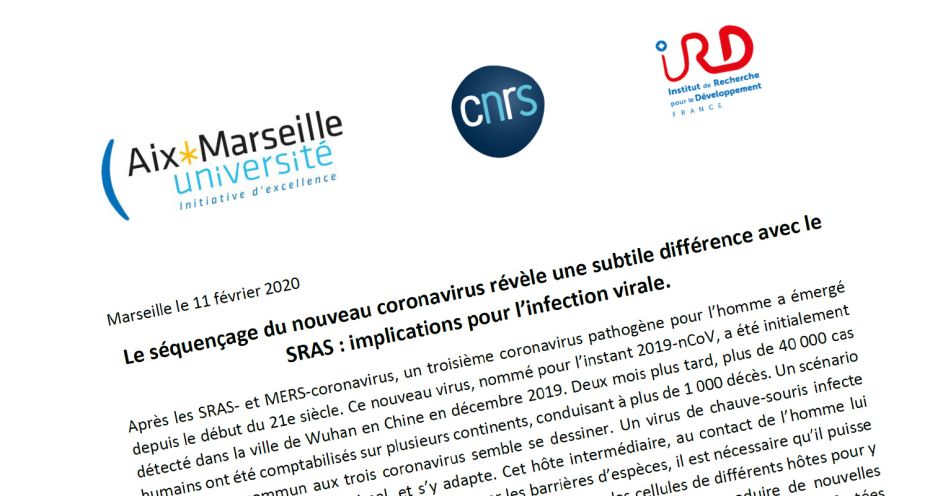
After SARS- and MERS-coronavirus, a third human pathogenic coronavirus has emerged since the beginning of the 21st century. This new virus, currently named 2019-nCoV, was first detected in the city of Wuhan in China in December 2019.
Two months later, more than 40,000 human cases were recorded on several continents, leading to more than 1,000 deaths. An emergence scenario common to all three coronaviruses appears to be emerging. A bat virus accidentally infects an animal host and adapts to it. This intermediate host, when in contact with humans, transmits the virus to them. In order for the virus to cross species barriers, it must be able to anchor itself through its "Spike" protein to receptors on the surface of cells of different hosts in order to enter them. Once in the cell, it can replicate its genetic material, produce new viral particles and spread infection. However, when the virus is produced by infected cells it is immature and its entry into the target cell requires a process of maturation of the "Spike" protein by cellular enzymes.
Researchers from two teams from Aix Marseille University, CNRS and Université de Montréal have identified in the 2019-nCoV "Spike" protein sequence maturation motifs absent in the closest bat coronaviruses and in coronavirus-CSARS. The presence of this motif suggests that 2019-nCoV adopts an activation mechanism that uses ubiquitous cellular proteases called Furins, unlike SARS CoV for example. The researchers hypothesize that this motive is an important factor in the emergence or pathogenicity of the virus. This study also opens perspectives for the development of antiviral strategies that would target Cellular Furins.
- Read more: The spike glycoprotein of the new coronavirus 2019-nCoV contains a furin-like cleavage site absent in CoV of the same clade. Coutard B., Valle C., de Lamballerie X., Duck B., Seidah N.G., Decroly E., Antiviral Research, in press. This study is partly carried out within the framework of the project "European Virus Archive Global (EVA GLOBAL)", funded by the European Union's Horizon 2020 research and innovation programme (Convention No. 871029).

